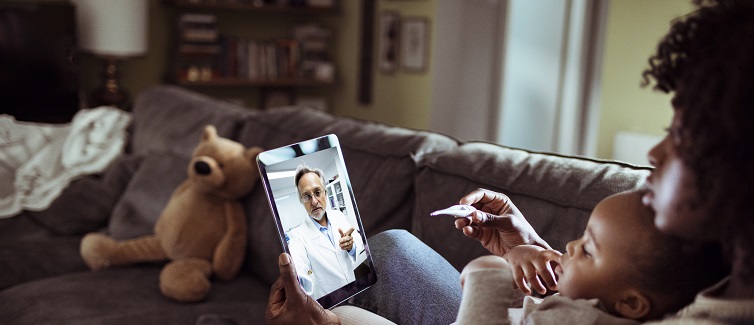The COVID-19 pandemic made telemedicine services a necessary option for patients to receive care.
When it comes to telemedicine vs. telehealth, telemedicine is technically a type of telehealth. But we use the terms interchangeably.
You can schedule a telehealth visit the same way you would an in-person appointment. You can see primary care or internal medicine physicians, as well as many specialists.
RELATED: Learn more about UPMC’s Telemedicine services
Never Miss a Beat!
Subscribe to Our HealthBeat Newsletter!
Thank you for subscribing!
You can now select the specific newsletters you'd like to receive.
You are already subscribed.
Subscribe to more newsletters in our email preference center.
Sorry, an error occurred. Please try again later.
Get Healthy Tips Sent to Your Phone!
Common Reasons to Use Telemedicine Services
Some of the reasons you might schedule a telehealth visit include:
- You’re not feeling well, and you want to talk to the doctor about your symptoms.
- You have a suspicious rash or a possible infected wound or sore, and you need someone to look at it.
- You are hoping to get a prescription called in, but need to see a doctor first.
- Your doctor needs to review your lab tests related to chronic conditions, such as diabetes or congestive heart failure.
- You are feeling anxious, depressed, or having a mental health issue, and you want to talk to your doctor.
- You have a medical question for your doctor or want to talk about how your medications are working.
- You need a follow-up appointment after a procedure or hospitalization.
- You need a referral to a specialist.
What Conditions Can Be Treated Virtually?
Doctors and nurses have improved their use of technology to get the most from video visits with patients. You might be surprised how many conditions they can treat virtually.
Using telemedicine, providers can often treat conditions such as:
- Rashes or other skin issues.
- Sore throat.
- Ear pain.
- Eye infections.
- Cold and flu.
- Arthritis pain.
- Sprains or strains.
- Insect bites.
- Allergies.
- Bladder or urinary tract infections.
- Thyroid problems.
- Depression/anxiety.
- Attention deficit hyperactivity disorder (ADHD).
- Insomnia or other sleeping issues.
- Menopausal symptoms (hot flashes).
- Diabetes and other chronic conditions that require frequent follow-up visits to review blood work.
There is really no nonemergency condition for which treatment can’t at least be initiated using a video visit. If you need to be seen in person or have some tests done, the doctor will tell you that. If the doctor recommends prompt in-person treatment for a non-emergency condition, she can call the urgent care center to streamline your visit.
Benefits of Using Telehealth Services
Telemedicine gives you access to quality care without having to leave your home.
Scheduling a video visit means you don’t have to sit in a waiting room with sick patients. You don’t have to worry about traffic or parking. You don’t have to worry about childcare while you head to the doctor.
It also offers you the ability to schedule at your convenience. This is a huge benefit for working people, who may only have their lunch hour to squeeze in an appointment. It’s helpful for parents, too, because pediatricians can see kids via video visits.
There is also a benefit to the doctor seeing you at home. It’s not quite a “house call,” but being in your native environment may enable your provider to do simple things like:
- Look through and discuss a basket of medications with you.
- Spot fall hazards (like a loose rug) in your home.
- Evaluate the sleep hygiene of your bedroom if you’re having insomnia problems.
- Look through your fridge and cabinets with you to talk about healthy food choices.
Though you aren’t in-person with your provider, video visit technology allows you to receive personalized care.
If you’re interested in learning more about telemedicine, visit the UPMC Telemedicine website.
About UPMC
Headquartered in Pittsburgh, UPMC is a world-renowned health care provider and insurer. We operate 40 hospitals and 800 doctors’ offices and outpatient centers, with locations throughout Pennsylvania, Maryland, New York, West Virginia, and internationally. We employ 4,900 physicians, and we are leaders in clinical care, groundbreaking research, and treatment breakthroughs. U.S. News & World Report consistently ranks UPMC Presbyterian Shadyside as one of the nation’s best hospitals in many specialties and ranks UPMC Children’s Hospital of Pittsburgh on its Honor Roll of America’s Best Children’s Hospitals. We are dedicated to providing Life Changing Medicine to our communities.
